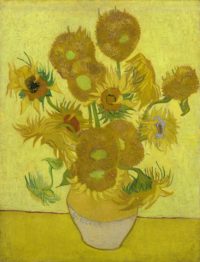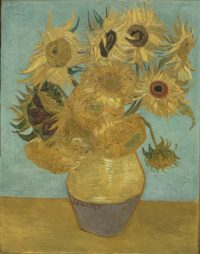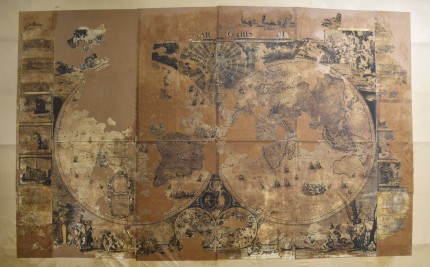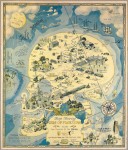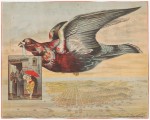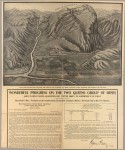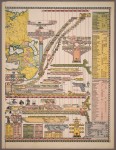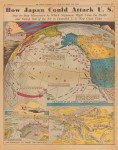Rothwell charnel chapel is the UK’s most complete surviving medieval charnel house, rooms used to contain the bones of the dead to make room in cemeteries for the next generation of corpses. The charnel chapels attached to churches in the Middle Ages weren’t scary places. They were well-lit, clean, sturdily built with permanent access from the exterior (doors, stairways) so the general public could visit and pay their respects to the dead. Rothwell Parish Church built its charnel room under the church and contains the remains of at least hundreds of people who died in the Middle Ages.
It’s difficult to know how many charnel chapels existed in medieval Britain. Historians have generally thought they were fairly rare compared to their frequency on the continent, but researchers from the University of Sheffield think they have located as many as 60, or at least what little is left of them Time and the destruction wrought by the Reformation took an incalculable toll. That’s why Rothwell’s is so significant. One of only two medieval charnel chapels still remaining in situ (the other is St Leonard’s in Hythe, Kent), it is largely intact and still contains human skeletal remains placed there between the 13th and 16th centuries.
Dr Lizzy Craig-Atkins, who led the project from the University of Sheffield’s Department of Archaeology, said: “Rothwell charnel chapel is a site of major international significance. Surviving charnel chapels, with human remains still housed inside, are very rare in England. What is so fascinating about the Rothwell charnel chapel it is that it presents an ideal archaeological resource for researchers to use to advance our understanding of how the remains of the dead were treated during the medieval period.
With so little hard data to go on, many historians thought charnel houses were of minor religious import even in their heyday in England, that they were just places to store bones dug up from the intercutting of new graves or during church construction. The University of Sheffield’s Rothwell Project has upended that belief. It wasn’t until the 13th century that charnel houses and chapels began to be constructed. Before that, dug up bones were reinterred in the new grave or in mass pits. The new charnel spaces of the 13th century were the first time human skeletal remains were kept above ground in meaningful quantities. That’s a major shift in attitude and approach, and it can’t be explained in utilitarian terms because reburying the bones is a lot easier, cheaper and faster than building an above-ground space for them.
Rothwell Project researchers think this shift is connected to the doctrine of Purgatory receiving official Church recognition in 1254. Souls suffering the torments of purgation could be sped on their way to heaven by the prayers and hymns of the living on their behalf. Charnel chapels in mainland Europe are known to have had confessionals and been treated as places or repentance and forgiveness. English charnel chapels also had priests whose duty it was to hear confessions and offer absolution. The Sheffield team thinks all this is linked together, that charnel chapels, like chantries in the churches above them, provided the public with the opportunity to pray for the souls of the departed still locked in purgatory and to avoid the same fate themselves. The rejection of purgatory and confession by Protestants explains why the charnel chapels and their human remains were so cruelly disposed of during the Reformation. The bones were reburied, often in unconsecrated ground, and the rooms either walled up so no trace of them was visible from the outside or reused for random purposes rented out to local merchants for cool storage.
Unfortunately Rothwell charnel chapel is not widely accessible as an archaeological resource, no matter how valuable it might be, because it can’t accommodate human traffic (not of the living kind, anyway) due its delicate preservation conditions. The space is tight, keeping moisture and temperature steady is a challenge, and one false move could irreparably damage the structure and human remains.
In this day and age, there are other options. The Digital Ossuary is a collaboration between the University’s archaeology and computer science departments which has captured the physical space of the charnel chapel, its proportions, where the medieval access points were, high-resolution detail of the bones which will allow osteological study that was previously impossible as well as help determine conservation practices for the long-term preservation of the charnel.
“This new digital resource provides an opportunity for people all over the world to explore the site and helps us to preserve this fascinating window into the past for future generations.” […]
The new digital resource, together with research on the chapel, will be fed into undergraduate and postgraduate programmes for archaeology students at the University of Sheffield.
Archaeologists leading the project are also welcoming the input of researchers who might be interested in working with the model, which has been published via ORDA, the University’s file sharing platform.
And now, without further ado, here is the 3D flythrough of Rothwell Parish Church’s charnel chapel.
